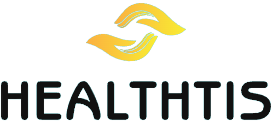Cholesterol – Causes, Symptoms and Treatments!
Cholesterol – Causes, Symptoms and Treatments that everyone should know. In addition, Cholesterol is a type of fat (lipid) in the blood. Your cells need Cholesterol , and your body does everything it needs to. But you also get it from the food you eat. If you have too much, it starts to build up in your arteries . ( Arteries are the blood vessels that carry blood away from the heart .)
This is called hardening of the arteries or atherosclerosis . It is the starting point for some heart and blood flow problems. The buildup can narrow the arteries and make it more difficult for blood to flow through them. The buildup can also lead to dangerous blood clots and inflammation that can cause heart attacks and strokes.
News of the week:
Causes: It is transported through your blood, bound to proteins . This combination of protein and cholesterol is called lipoprotein. You may have heard of different types, based on the type of Cholesterol that the lipoprotein carries. They are:
- Low density lipoprotein (LDL). LDL, or “bad,” Cholesterol carries cholesterol particles throughout your body.
- LDL cholesterol builds up in the walls of arteries , making them hard and narrow.
- High density lipoprotein (HDL). HDL, or “good,” takes excess Cholesterol and takes it back to your liver .
- Factors within your control – such as inactivity, obesity and an unhealthy diet – contribute to high LDL cholesterol and low HDL cholesterol .
- Factors beyond your control may also play a role. For example, your genetic makeup can prevent cells from efficiently removing LDL Cholesterol from your blood or cause your liver to produce too much Cholesterol .
Cholesterol Symptoms: It usually does not cause any symptoms. In most cases, this only causes emergency events. For example, a heart attack or stroke can result from the damage caused by high cholesterol .
These events usually don’t occur until high cholesterol leads to plaque buildup in your arteries . Plaque can narrow the arteries so less blood can get through. Plaque formation changes the composition of the arterial lining. This can lead to serious complications.
A blood test is the only way to know if yours is too high. This means having a total blood cholesterol level above 240 milligrams per deciliter (mg/dL). Ask your doctor to give you a test after you turn 20 years old. Then, reward your Cholesterol every 4 to 6 years.
Your doctor may also suggest that you have your cholesterol checked more often if you have a family history of high cholesterol . Or if you demonstrate the following risk factors:
- You have high blood pressure .
- You are overweight .
- smoke.
Genetic Conditions: There is a condition passed on by genes that causes high cholesterol , called familial hypercholesterolemia. People with this condition have cholesterol levels of 300 mg/dL or more. They may experience xanthoma, which may appear as a yellow patch above the skin , or a lump under the skin .
- Cholesterol Treatment .
- Lifestyle changes.
A diet rich in unsaturated fats and low in saturated fats is suitable for everyone, regardless of their cholesterol level . But if you have dyslipidemia, following this diet is even more important.
However, it does not always solve the problem of high cholesterol alone , because the increase in LDL cholesterol is related to genetic and dietary factors . lose weight
Remember that all animal foods contain Cholesterol . Therefore, give preference to plant-based foods: fruits, vegetables, legumes and grains. Those who are predisposed to high cholesterol should follow the same recommendations described in the treatment: maintain healthy lifestyle habits, avoid smoking and control cholesterol and blood pressure . Habit suggestions:
- Eat more fruits and vegetables.
- Eat more grilled or baked fish and less fried meat.
- Eat a variety of fiber-rich foods , such as oatmeal, whole-grain breads, and apples . Fibers help reduce cholesterol levels .
- Limit your intake of saturated fats , such as fat from dairy products.
- Limit foods high in cholesterol , such as egg yolks and liver .
- Use low-fat dairy products: skimmed milk, low- fat yogurt and light ice cream.
- Avoid fried foods.
Dietary care should be redoubled by people with diabetes , as they have a risk of manifestations of atherosclerosis that is three to four times greater than that of non-diabetic people. There are foods that help reduce blood cholesterol levels , as well as those that should be avoided.
Medications: Despite diet and physical activity it often remains high, and we often must use medication to lower LDL levels. The drugs of choice for reducing LDL and increasing HDL are the so-called statins, also called inhibitors of the enzyme HMG-coA reductase (the liver enzyme responsible for the production of Cholesterol l).
Useful links:
The statins that we have in pharmacies are:
- simvastatin.
- Atorvastatin.
- Fluvastatin.
- Pravastatin.
- Rosuvastatin.
- Pitavastatin.
